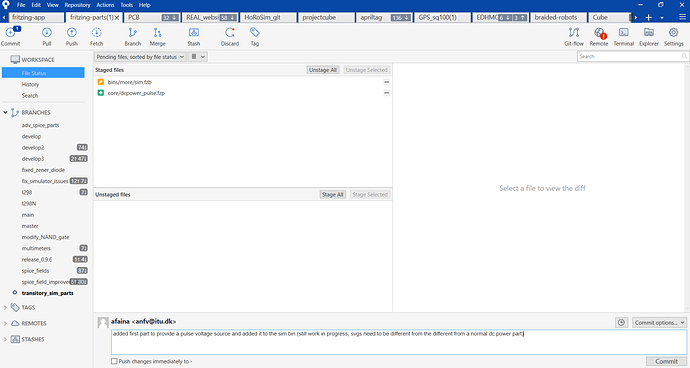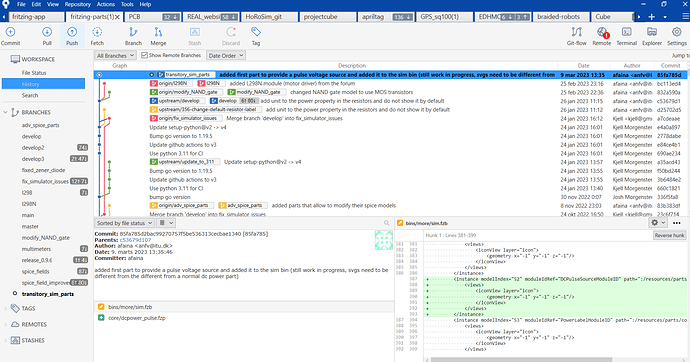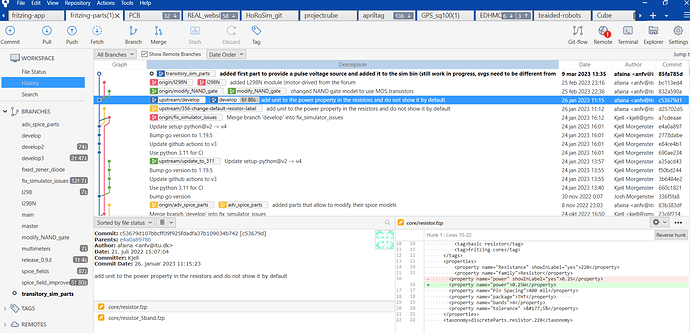Yes, try to “cancel” a commit is a bit more tricky. The easy way would be to undo the changes in your files and make a new commit. There will be two commits, but it does not matter too much. Another way could be to go to the previous commit and create a new branch. After that, you can modify the files and push the changes to the remote repository (in github). And in the GitHub website, cancel the original pull request and open a new one with the new branch.
I can still see your pull request in GitHub: Add new part Dual_VNH5019_motor_driver by vanepp · Pull Request #362 · fritzing/fritzing-parts · GitHub
I think that you do not need to do that. You can go back to the develop branch (git checkout develop) and create a new branch and switch to it (git checkout -b new_branch). Then, you will be in the branch new_branch but the files will be the same as in the develop branch. After that, you can modify your files, commit and push your changes to the remote repository in GitHub as many times as necessary. When you think your files are ready to be committed to the official repository, you go to GitHub and open a pull request. if you commit more changes to your remote repository they will be added automatically to the pull request.
The old branch will be ignored and you could delete it or not. It does not matter too much.
I can do that, but it would be great if you do it directly. You are creating a lot of parts and it would be great to integrate them in Fritzing. I cannot do that for all of them and it takes me a while to do it, especially if they need to be obsoleted.
I know git is annoying and frustrating, but I am happy to assist you. We could organize an online meeting where we commit the changes together. You can also try SourceTree, which gives you a GUI where you see the changes to commit, the branches in a tree way and you can change between branches by double clicking on them, see below.
In this moment, I created a branch called “transitory_sim_parts” where I am working. This branch is based on the develop branch (commit c53679d1) and I have not committed anything to this branch, but I can see that there are uncommitted changes in the files with respect to the develop branch.
If I click on the uncommited changes, I can observe all the files that have changed, see below. In this case, I added a new file called dcpower_pulse.fzb into the core folder and I have modified the file in bins/more/sim.fzb. When I click on these files, I can see what I have modified. In the example, I added a new part to the simulation bin.
When I am ready to commit, I press commit in SourceTree and I choose the changes that I want to commit. In the case below, I have chosen to stage all the modifications, but I could avoid some files or specific changes in the file. After that, I write the commit message and press commit.
When this is done, I can go to the history and see that commit added to the tree. When I click on a commit I can see the changes made by that specific commit:
For example, if I click on the last commit on the develop branch, I can see that I modified two resistor files, where I added the symbol to the property and remove the showInLable=“yes”.
If I want to change to the develop branch, I just need to double-click on the develop branch. Notice that the commit is in bold and the develop branch is also bolded at the left pane.
I hope that this helps you, but again, I am more than welcome to do it together in a real example on your computer. Once you get used, it is not as frustrating.





